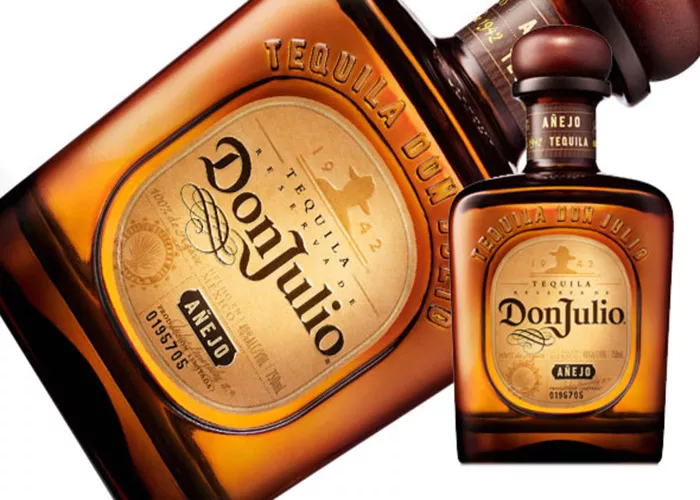Tequila is a popular distilled spirit that is enjoyed by people all over the world. It is made from the blue agave plant, which is a type of succulent that is native to Mexico. In this essay, we will explore what tequila is made from, including the history of tequila production, the production methods used to make tequila, and the unique flavor profile of different types of tequila.
History of Tequila Production:
The history of tequila production can be traced back to the 16th century, when Spanish conquistadors first arrived in Mexico. At the time, the indigenous people of Mexico were already fermenting a type of agave juice, which they called “pulque.” The Spanish soon began distilling this agave juice to create a stronger, more potent spirit, which they called “tequila.”
Over time, tequila became a staple of Mexican culture, and is now recognized as a protected designation of origin (PDO) product by the Mexican government. This means that tequila can only be made in certain regions of Mexico, and must meet strict production standards to be considered authentic tequila.
Appearance and Characteristics
The blue agave has large, spiky leaves that grow in a rosette shape. The leaves are thick and fleshy, with a blue-green color.
The plant can grow up to 2 meters tall and can weigh several hundred pounds.
Inside the blue agave is a core called the piña, which is rich in sugars and is used to make tequila.
Growing Conditions
The blue agave thrives in the arid regions of Mexico, particularly in the states of Jalisco, Guanajuato, Michoacán, Nayarit, and Tamaulipas.
It requires a specific climate with warm days and cool nights. The soil must be well-drained and rich in minerals.
The plant takes several years to mature, usually between 7 and 10 years.
Production Methods Used to Make Tequila:
1. Harvesting the Blue Agave
The blue agave is harvested by hand using a special tool called a coa. The leaves are cut away to reveal the piña.
Only fully mature piñas are used in tequila production. The piñas are then transported to the distillery.
2. Cooking the Piñas
At the distillery, the piñas are cooked to break down the starches and convert them into sugars. This is usually done in large ovens or autoclaves.
The cooking process can take several days and gives the tequila its unique flavor.
3. Extracting the Juice
After cooking, the piñas are crushed to extract the juice. This can be done using a traditional stone mill called a tahona or modern mechanical presses.
The extracted juice is called aguamiel (honey water) and is rich in sugars.
4. Fermentation
The aguamiel is then fermented using yeast. The fermentation process can take several days and converts the sugars into alcohol.
Different types of yeast can be used to produce different flavors and aromas in the tequila.
5. Distillation
After fermentation, the liquid is distilled to increase the alcohol content and purify the tequila.
Tequila is usually distilled twice in copper stills. The first distillation produces a low-alcohol liquid called ordinario. The second distillation produces the final tequila.
6. Aging and Bottling
Depending on the type of tequila, it may be aged in oak barrels for different periods of time. Aging gives the tequila its color and additional flavors.
After aging, the tequila is filtered and bottled.
Unique Flavor Profile of Different Types of Tequila:
The different types of tequila can have a significant impact on the flavor profile of the spirit. Blanco tequila, for example, is a type of tequila that is not aged and has a clear, transparent color. It has a crisp, clean taste with notes of citrus and pepper.
Reposado tequila, on the other hand, is aged for a minimum of two months and up to one year in oak barrels. This gives the tequila a golden color and a smoother, more complex taste, with notes of vanilla and caramel.
Añejo tequila is aged for a minimum of one year and up to three years in oak barrels. This gives the tequila a dark amber color and a rich, complex taste, with notes of chocolate and tobacco.
See Also: Is Old Crow a Good Bourbon? A Detailed Exploration
Health Benefits and Risks of Tequila
1. Health Benefits
In moderation, tequila may have some health benefits. For example, it contains small amounts of antioxidants that can help protect against cell damage.
Tequila may also have a positive effect on digestion. Some people believe that a small amount of tequila after a meal can help stimulate digestion.
2. Risks
Like all alcoholic beverages, tequila should be consumed in moderation. Excessive consumption can lead to a variety of health problems, including liver damage, high blood pressure, and increased risk of certain cancers.
Tequila can also cause dehydration and hangovers. It is important to drink plenty of water when consuming tequila to avoid dehydration.
Conclusion:
In conclusion, tequila is a popular distilled spirit that is made from the blue agave plant, which is native to Mexico. The production process involves harvesting the agave plant, cooking the piña, extracting the agave juice, fermenting and distilling the juice to create tequila. The different types of tequila, including blanco, reposado, and añejo, can have a significant impact on the flavor profile of the spirit, with each type of tequila having its own unique taste and characteristics. Whether enjoyed on its own or in a cocktail, tequila is a versatile spirit that is enjoyed by people all over the world.
You might be interested


